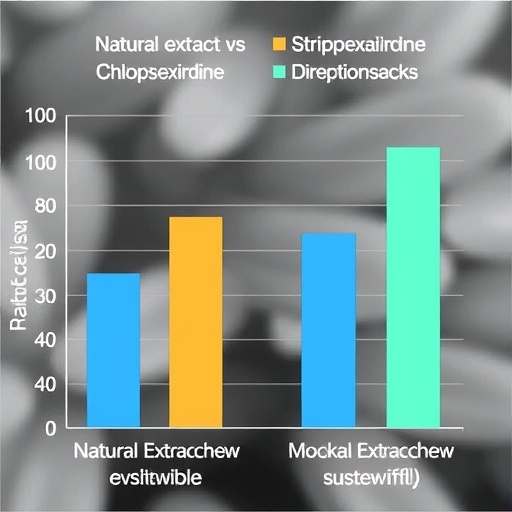Anemia in newborns is increasingly recognized as a critical health issue, especially in the African context. Recent research conducted by Messelu et al. sheds light on the prevalence of anemia among newborns across the continent, revealing alarming statistics and a complex interplay of socioeconomic, environmental, and healthcare-related factors contributing to this condition. The systematic review and meta-analysis encapsulate numerous studies, offering a comprehensive view of the anemia landscape faced by newborns in Africa today.
Anemia, characterized by a deficiency in red blood cells or hemoglobin, can have serious repercussions on infant health and development. In neonates, it is particularly concerning because it can lead to long-term cognitive impairments and developmental delays, significantly impacting a child’s future. As such, understanding the prevalence of anemia in this vulnerable age group is of paramount importance. The research emphasizes the urgent need for public health interventions tailored to address the unique needs of newborns.
In their systematic review, the authors collected data from multiple studies conducted across various countries in Africa, employing rigorous methodological standards to synthesize their findings. This approach ensures that the reported figures on prevalence rates are not only accurate but also reflect the broader realities faced by these infants. The study compiles a vast array of demographic data, revealing significant disparities in anemia prevalence based on geographic region, urban versus rural residence, and socioeconomic status.
One striking finding from the research is the geographical variability in anemia rates. Some countries exhibit prevalence rates upwards of 50%, while others fall below this threshold. This difference can be attributed to various factors, including nutrition, access to healthcare services, and public health initiatives focusing on maternal and child health. In regions where healthcare access is limited, higher rates of anemia are often correlated with higher mortality rates among newborns, compounding the public health challenge.
Moreover, the study highlights the multi-faceted nature of anemia among newborns. It identifies several associated factors that contribute to this condition, including maternal anemia, low birth weight, and premature birth. Interestingly, maternal education and socioeconomic status play pivotal roles in determining the health outcomes of newborns. Infants born to mothers with higher educational attainment and better access to healthcare facilities tend to fare better in terms of anemia prevalence.
Nutritional factors are also paramount. The review indicates that inadequate dietary iron intake during pregnancy significantly influences gestational anemia, thus placing newborns at risk. The authors advocate for improved maternal nutrition programs that emphasize iron-rich foods and supplementation during pregnancy to mitigate these risks. Addressing such nutritional gaps is critical for the health of both mothers and their newborns.
Access to effective healthcare services is another cornerstone of the findings. The data indicate that regions with robust health systems have lower rates of anemia among infants. This highlights the importance of developing healthcare infrastructure that can provide not only prenatal care but also immediate postnatal support. Initiatives aimed at improving healthcare access for pregnant women and new mothers can lead to lower anemia rates and improved health outcomes for newborns.
Public health policies must also take into account the socio-economic dimensions affecting anemia prevalence. The review points out that social determinants of health—such as poverty, education, and urbanization—are crucial in shaping health outcomes. Understanding these determinants allows for more effective public health strategies that target at-risk populations and work towards equity in health access and outcomes for newborns across various regions.
The authors also stress the need for increased awareness and education surrounding anemia in newborns. Stakeholders, including healthcare professionals, policymakers, and community leaders, must recognize the significance of this issue. Public health campaigns aimed at raising awareness about the importance of nutrition, maternal health, and regular health checks can lead to increased vigilance among caregivers and families.
Findings from Messelu et al.’s research serve as a clarion call for collaborative efforts among governments, health organizations, and communities in their fight against anemia in newborns. Implementing evidence-based interventions, bolstered by the data presented in this systematic review, can create a healthier future for the youngest members of society. The call for action underscores the necessity of addressing anemia as part of a comprehensive health strategy that prioritizes the well-being of both mothers and their newborns.
In conclusion, this research not only highlights the pressing issue of anemia in newborns in Africa but also provides a roadmap for addressing this pervasive public health concern. By focusing on multifaceted interventions linked to healthcare access, nutrition, education, and awareness, stakeholders can begin to make significant strides towards reducing anemia rates. Ultimately, protecting the health of newborns translates into stronger, healthier communities, laying the groundwork for future generations.
As we reflect on the insights from this comprehensive review, it is vital to remember that anemia in newborns is not just a health issue; it is a societal challenge that requires collective responsibility and action. The earlier we address the root causes and implement effective interventions, the greater the chance we can prevent anemia and improve the lives of countless infants across the African continent.
Subject of Research: Prevalence and factors associated with anemia among newborns in Africa
Article Title: Prevalence and associated factors of anemia among newborns in Africa: a systematic review and meta-analysis
Article References:
Messelu, M.A., Amlak, B.T., Akalu, T.Y. et al. Prevalence and associated factors of anemia among newborns in Africa: a systematic review and meta-analysis. BMC Pediatr 25, 770 (2025). https://doi.org/10.1186/s12887-025-06103-8
Image Credits: AI Generated
DOI: 10.1186/s12887-025-06103-8
Keywords: Anemia, Newborns, Africa, Public Health, Maternal Health, Nutrition, Socioeconomic Factors
Tags: anemia and infant developmentanemia in African newbornscognitive impairments in newbornscomprehensive analysis of anemia in newbornsenvironmental factors and anemiahealth impacts of anemiahealthcare challenges in Africaneonatal health issues in Africaprevalence of anemia in infantspublic health interventions for anemiasocioeconomic factors affecting anemiasystematic review of anemia studies





